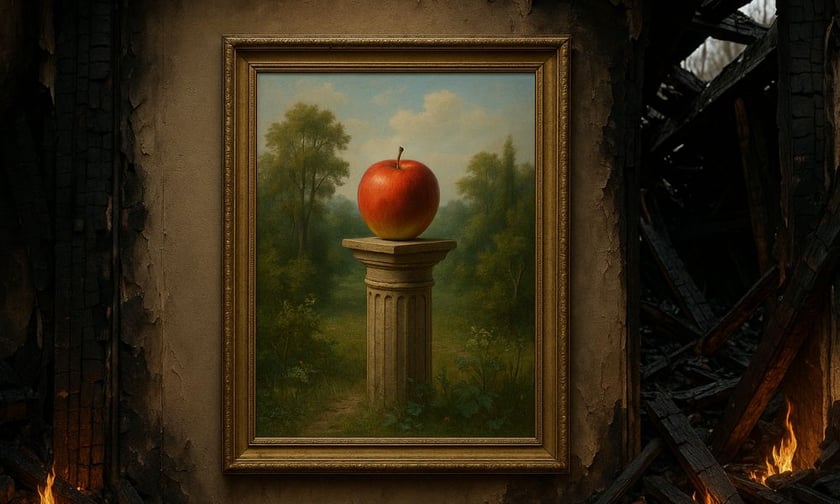

A legal dispute over insurance coverage for fire-damaged artworks valued at hundreds of millions of dollars is underway in Manhattan, with a group of collectors led by financier Ron Perelman seeking $410 million.
The plaintiffs allege the sum is owed by insurers following a 2018 fire that caused extensive damage to high-value pieces by artists such as Andy Warhol, Edward Ruscha, and Cy Twombly.
The fire occurred at a private residence and required “thousands of gallons of water” to extinguish, according to the collectors. They argue that water, smoke, soot and moisture led to degradation of the artworks. Insurers involved in the matter have already paid $141 million but are accused of withholding full payment under policy terms.
Court filings show that Lloyd’s, Great Lakes, and Swiss Re provided the primary layer of insurance with a limit of $200 million, while AIG and Federal each carried excess layers also capped at $200 million.
According to documents filed by the plaintiffs on June 4, the works involved include Warhol pieces valued at $100 million and $75 million, two Ruscha pieces at $60 million and $50 million, and a Twombly valued at $125 million.
Fine art insurance policies, particularly those held by private collectors, are typically structured as either blanket or scheduled coverage. Scheduled policies, as used in this case, assign fixed values to individual works, often determined at the time of underwriting.
These policies generally provide all-risk protection, which includes damage from fire, water, smoke, and handling, but typically exclude gradual deterioration, wear and tear, or mysterious disappearance. Underwriters require detailed documentation and condition reports to confirm the insurability of high-value assets.
Premiums for fine art insurance usually range between 1% and 2% of the insured value annually. For artworks valued in the hundreds of millions of dollars, this means collectors may be paying multimillion-dollar premiums each year.
The high cost reflects both the rarity of the pieces and the difficulty in replacing or restoring them. These premiums are also influenced by factors such as geographic risk, security systems, and storage conditions, all of which are typically scrutinized by underwriters before coverage is bound.
The plaintiffs in the Manhattan art collectors’ case assert they made clear during policy discussions that scheduled values were not the same as appraised values. They maintain that the figures account for premiums required to replace unique artworks, including incentives to persuade a seller to part with comparable works.
They also argue that these higher valuations were factored into premium pricing by insurers.
According to industry data, most fine art insurance claims are not due to theft or fire but to accidental damage during transit or handling. This includes incidents such as drops, punctures, or exposure to temperature fluctuations during shipping.
Although the fire in this case is the central issue, insurers are likely to assess the artworks’ storage and movement history to identify potential vulnerabilities that could contribute to or exacerbate damage. Carriers often require climate-controlled transit services and specialized packaging for insured works to mitigate these risks.
Transit-related damage is particularly significant, accounting for up to 50% of fine art insurance claims according to some industry reports. This risk is typically addressed through “nail-to-nail” coverage, which protects the artwork from the moment it leaves its display or storage location until it reaches its destination.
While this case centers on in-situ damage from a residential fire, questions around prior movement of the pieces and handling protocols may also be relevant in determining the extent and cause of the reported damage.
Some carriers reportedly dispute that the works suffered physical damage, with arguments hinging on whether “invisible damage” constitutes a covered loss. Insurers claim expert assessments found the condition of five paintings to be consistent with their age, casting doubt on damage claims.
Insurers also cite a March 2020 credit report by Deutsche Bank on one of Perelman’s businesses. The report referenced the company’s failure to meet margin calls and included mention of a possible sale of Ruscha’s “Box Smashed Flat,” one of the disputed works.
The document noted that even minor damage to the painting could result in a claim yielding $30 million to $50 million, or three to five times its appraised value.
Insurers argue this indicates the claim is structured more for financial gain than recovery of actual loss, describing it as “contrived” in court filings. The trial continues as both sides seek to establish the validity of the claims and valuations at the heart of the case.
What are your thoughts on this story? Please feel free to share your comments below.
